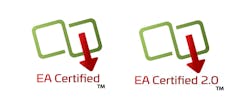Understanding Power-over-Ethernet Deployments
Power over Ethernet (PoE) has become nearly ubiquitous for powering IoT devices, such as access points, phones, and cameras, and this may be a prelude to the next wave of growth. The Dell’Oro Group forecasts annual shipments of PoE ports to grow from 130 million in 2020 to 168 million in 2024.
As PoE proliferates, so have the range of PoE capable devices using different brand names and terminology, with no visible way to distinguish between standardized and non-standardized solutions. As a result, interoperability issues and market confusion have increased.
Respondent Profiles and Plans
To better understand the market conditions, the Ethernet Alliance surveyed 822 individuals designing, installing, and using PoE systems in January of 2020. The job roles of the respondents are shown in Figure 1. The results outline some of the issues and opportunities that these groups will face as PoE installations continue to grow, as well as their expectation of how a new certification program from the Ethernet Alliance can help.
On average, survey respondents supported or installed roughly 100 PoE devices each; 80% of them had deployed more than 20 devices. Also, 96% of respondents planned to install additional PoE devices in the next 12 months, with two-thirds of them planning to install more than 20. Figure 2 shows what they’re planning to install.
The newly adopted IEEE 802.3bt Power over Ethernet standard extends the offered power up to 90 W, opening the door to a new generation of devices that include large displays, advanced cameras, and computing devices. Respondents are expecting to deploy devices based on this standard in the coming year, with 27% planning to deploy devices supplying or using more than 60 W as defined in the standard (Fig. 3).
Problems with PoE Devices
In Figure 4, 78% of respondents reported one or more of the problems as outlined in the chart, with 29% reporting that one or more of these problems had been significant. And while many are planning to add high-power IEEE 802.3bt devices to their mix, 59% felt the problems with those devices would be about the same or worse.
What’s the reason for these difficulties? The term “PoE” isn’t registered, and any vendor can claim PoE capabilities. Currently, there are three published IEEE 802.3 PoE standards, and they’re designed to be interoperable. These standards define eight different wattage levels or classes, which can be delivered via four configurations: Type 1 and 2 that use two pairs, and Types 3 and 4 that use four pairs. Further, vendors have created additional terms, such as PoE+ and PoE++ as well as Cisco’s Universal PoE (UPOE), which are “add-ons” to the standards.
Finally, some PoE implementations exist outside of the standards. For example, “passive” PoE implementations provide “always on” power, which isn’t negotiated between the PSE and PD. Techs in the field, and even designers, can become quickly confused about what will work with what.
Ethernet Alliance Certification
To cut through this confusion and enhance interoperability, the Ethernet Alliance, a global consortium dedicated to market education and advancement of Ethernet technologies—members of which include manufacturers representing providers of 90% of PSE switching equipment—has introduced the Ethernet Alliance PoE Certification Program. This program provides a methodology for certifying products so that they’re interoperable with other IEEE-802.3-based PoE solutions, and providing simple labeling of such products.
Certification of the products is performed using a thorough process with approved testing equipment. This may be conducted by manufacturers themselves or third-party laboratories, such as the University of New Hampshire’s Interoperability Laboratory (UNH-IOL). Both PSE and PD equipment may be certified. Equipment that passes this rigorous process may be labeled with the “EA Certified” approved logo, which also indicates the power provided or required by the device (Fig. 5).
The rigorous test regimen of the Ethernet Alliance PoE Certification validates that the PoE devices strictly adhere to IEEE 802.3 PoE standards. Customers who purchase Ethernet Alliance PoE Certified products can expect effortless integration and operation as a result.
Expectations for the Program
A strong claim, but what does the market think of the program? The Ethernet Alliance PoE certification program is in its infancy, with the first testing completed in Q1 of 2020. So it’s not surprising only 37% of the respondents were aware of the program. Once the program was explained in the survey, though, their expectations were strongly positive—72% expected certified products would be vastly or noticeably better in one of the four problem areas discussed earlier (Fig. 6).
Customers also indicated they would prefer a certified product. Given two similarly featured and priced products, 22% said they would definitely choose the certified product and 95% said they would be influenced by the certification status (Fig. 7).
How much would customers be willing to pay for certified products? Half of the respondents stated they would pay a premium of 30% or greater for a certified product. This represents a major competitive advantage, especially for suppliers who are early adopters of this process.
The combination of simplicity and cost savings provided by PoE assures this technology will see continued growth. The opportunity for manufacturers, installers, and users will grow even faster if customers are confident that their solutions can be implemented quickly and reliably. By addressing the types of problems customers see now and expect to continue, the Ethernet Alliance PoE certification program addresses a need that customers understand and see the value in supporting.
For more information on this survey, visit https://bit.ly/EAPoESurveyInfographic.
For a list of certified products, visit https://bit.ly/EAPoEProductReg.
To get started with certification program, visit https://bit.ly/EAPoEGetStarted.
Mark Mullins is an Ethernet Alliance member and a founding member of Fluke Networks.







